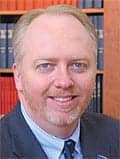Researcher: 2 Cochlear Implants Better Than 1
May 17, 2007
Research by Bill Noble, a professor of psychology at the University of New England.
New South Wales, Australia, is revealing that profoundly deaf people fitted with a cochlear implant can benefit from having implants in both ears.
Noble has been analyzing data collected from more than 180 patients (including about 40 with implants in both ears) in the Cochlear Implant Program at the University of Iowa. Noble, who is a consultant to the program, says it was the largest-scale subjective assessment of cochlear implants to be undertaken so far.
“A recent British study concluded that the added benefit from a second implant did not justify the additional expense,” he says. “After analyzing the Iowa data, I would not go along with that. The responses of these patients indicate that a second implant can increase confidence (and thus reduce anxiety) in a social context, make it easier to understand speech in a noisy environment (or speech that is unusually soft), and significantly enhance the ability to locate sounds. It can also enhance the quality—and ‘naturalness’—of sounds."
Noble, who is a specialist in the psychology of hearing, began his analysis of the Iowa data in 2005, during a 12-month term as Levitt Visiting Professor in that university’s College of Medicine. The patients in the Cochlear Implant Program had begun “self-rating” their experience of the implants 5 years earlier, at his suggestion. “Without this process of subjective assessment, the picture would have remained incomplete,” he says.
“While the added improvement from a second implant is not dramatic,” says Noble, “our data show that it can enhance the patient’s quality of life even further by reducing the effort required for listening in more demanding circumstances.”
“These findings could contribute to the formation of future public policies on the treatment of severe hearing loss,” he concludes.
SOURCE: University of New England (New South Wales, Australia) News and Events Web page. Complete article found at: http://www.une.edu.au/news/archives/000733.html.




